Bigger than Everest? Here are 6 ways to make your trek to Base Camp more sustainable, and cut down on a big problem
From bringing your own water filter to skipping a helicopter ride, we take a look at ways to reduce the environmental impact of your bucket-list trek
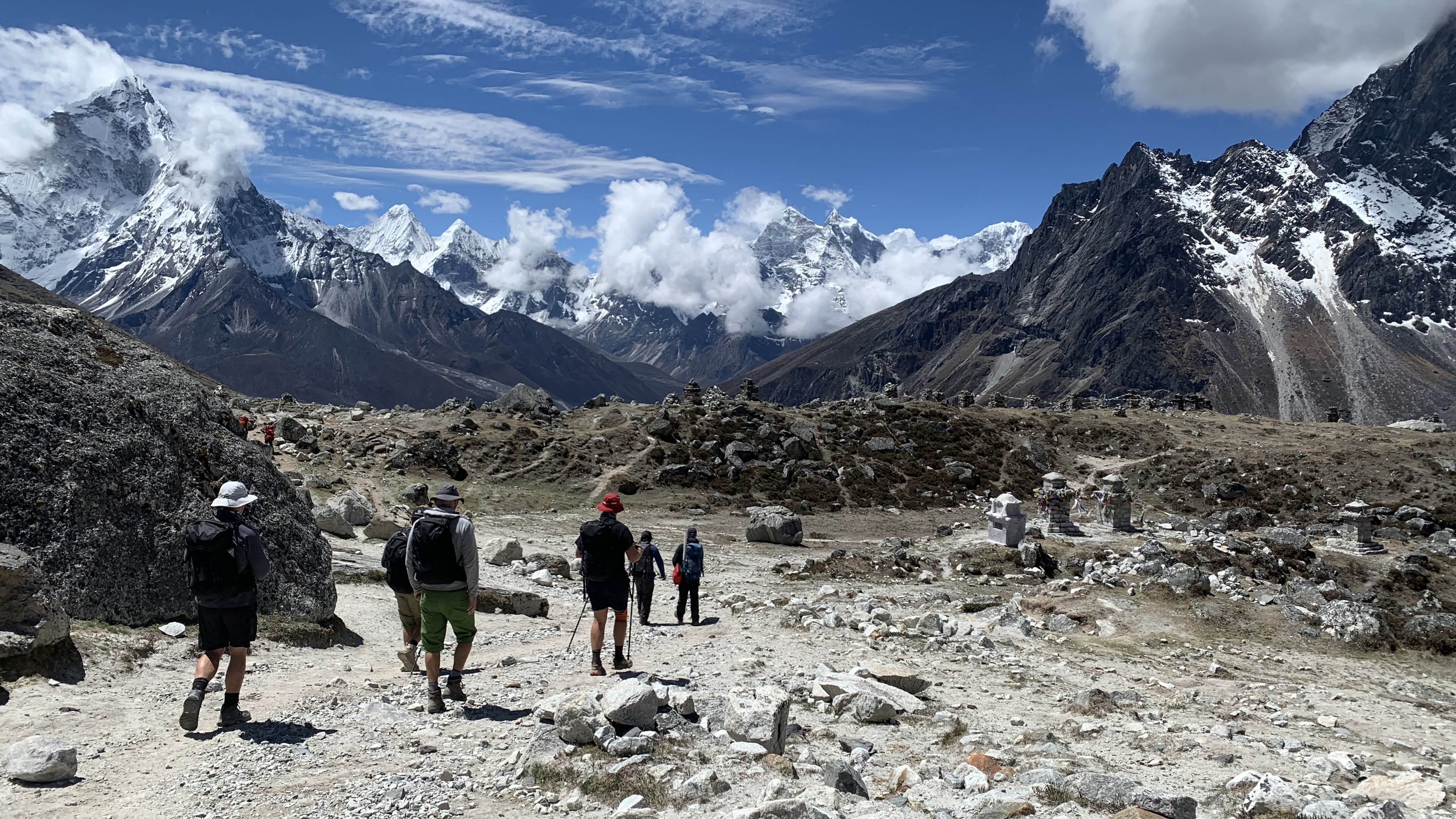
When I first signed up to trek to Nepal’s Everest Base Camp, I was excited to see some of the planet’s most spectacular natural features, from giant glaciers to soaring peaks, but I was also a little apprehensive. In recent years, news stories of mountains of human waste, abandoned tents, and overcrowding on Everest have hijacked the social narrative surrounding the world’s tallest peak. Was I going to be hiking through pristine environments or picking my way through mountains of garbage?
If you have the same concerns, I’ll cut straight to the chase here and let you know that the trek to Everest Base Camp is not heaped with trash. Various sustainability initiatives have been put in place to improve the conditions on the mountain, from making it more difficult to join an expedition to banning many single-use plastics. And it’s important to remember that the trekking industry and route that takes people along the Khumbu Valley is a whole different story from the landscape between Base Camp and the Summit.
But that’s not to say that there’s nothing to worry about. For starters, during peak trekking season, as many as 50 flights a day land at Lukla airport, the usual starting point for trekkers. Helicopters constantly buzz overhead to ferry gear, summit teams and trekkers in and out. There are reports of unnerving sights: black rocks appearing where once there was snow, and plans to move Base Camp downhill to get it off the increasingly unstable Khumbu Glacier.
As a trekker, you'll need to acknowledge the realities of a changing climate and think about how your actions affect the environments you want to explore.
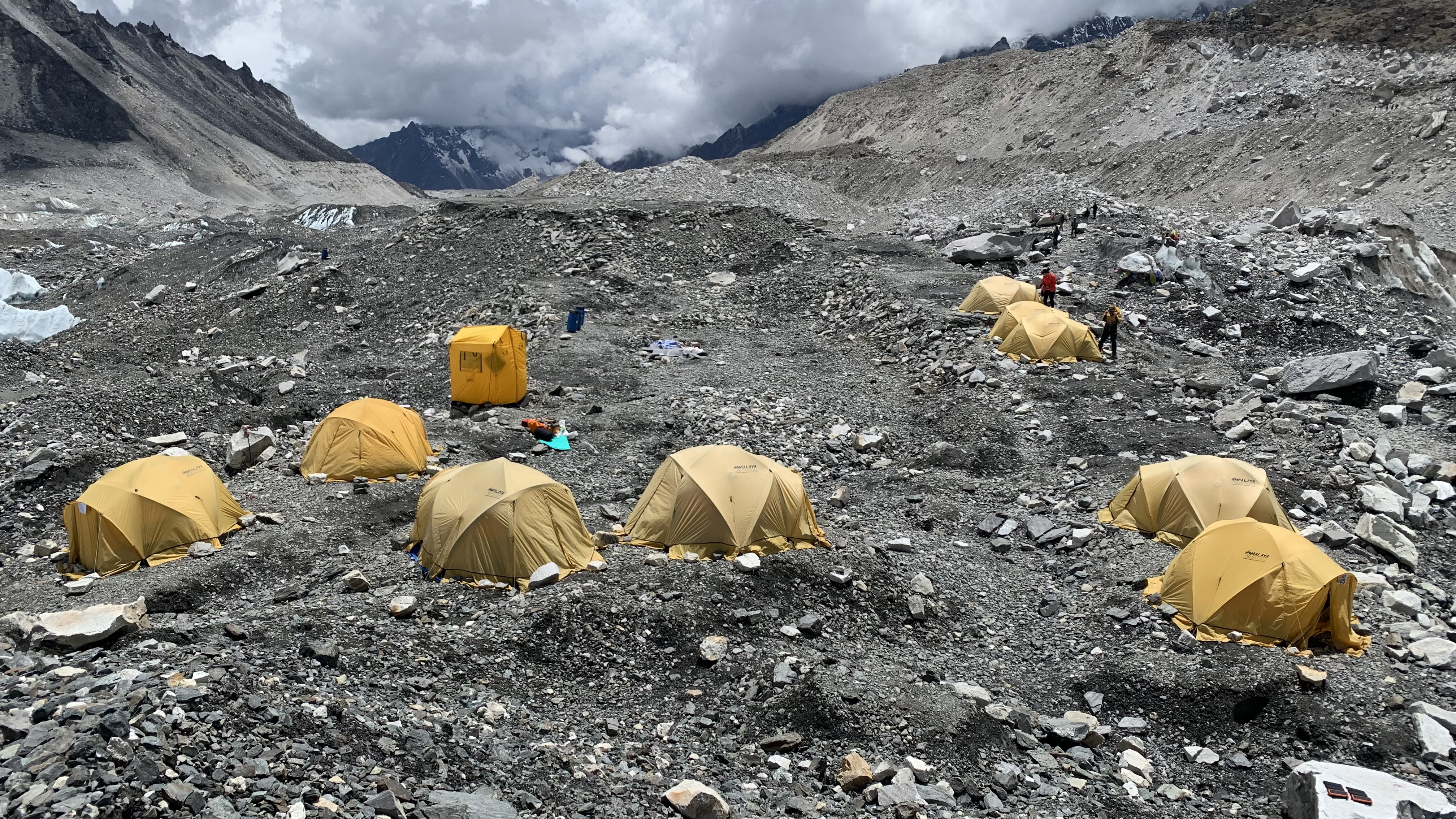
How can you make your trek to Base Camp more sustainable?
The most sustainable thing anyone can do is not to travel by air at all, but when I mention this to Andy Moore, founder of EverTrek, the company I went to Nepal with, he’s quick to point out that for this particular region, that spells a different kind of emergency.
“People not coming here is a killer, really,” says Moore, who saw the effects of a halt in travel on the Khumbu Valley during the pandemic, which has built a whole industry around supporting trekkers.
It’s also true that those who can make the biggest difference in the fight against climate change are giant corporations and not individual hikers, but that doesn’t mean that we can’t and shouldn’t each do our part.
All the latest inspiration, tips and guides to help you plan your next Advnture!
“I suppose it’s all about education and getting people involved,” says Moore.
His company prides itself on responsible travel and treks to Base Camp now include a stop at the Sagarmatha Next hub, which aims to change perceptions around waste in the region through its learning center and waste management initiatives.
“We’re not perfect. People have to travel here on planes, but we’re always trying to help in some way," says Moore.
The good news is that there are actions you can take to check off your bucket list trek without leaving too big of a footprint.
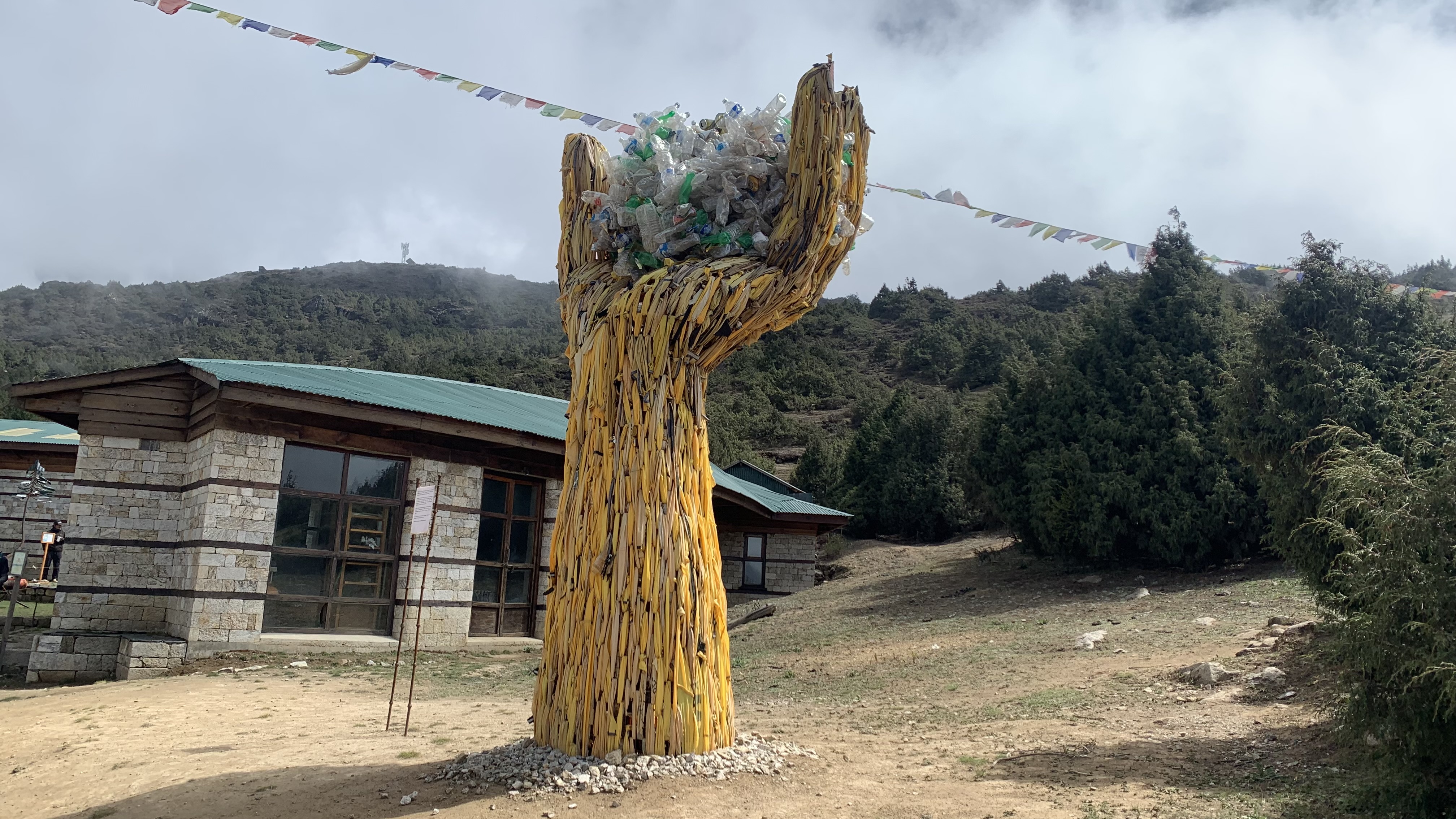
Drink responsibly
On the trek to Everest Base Camp, you’ll typically walk for 80 miles and make your way up to nearly 17,600ft (5,364m), which means you need to drink a lot of water. That presents a sustainability issue, because the water on the trek isn’t potable.
You’re encouraged to drink at least three liters of water a day, so if you’re drinking bottled water that you buy from teahouses and shops along the trek, even a small group of six people could go through nearly 200 plastic bottles in one trip, and that’s not counting the water consumed by your guides and porters.
Those bottles can be packed out and recycled, but even that uses resources, and most importantly, Nepal doesn’t recycle bottle caps (though Sagarmatha Next recycles them into cool moulds of the Everest region that you can buy). So, responsible trekking organisations have increasingly been looking for solutions to cut down on plastics.
“We used to use chlorine tablets, but the fact was nobody liked it because it was like drinking a swimming pool,” recalls Moore.
In 2019, EverTrek became the first UK company to bring water filters along on treks. For my trek, I was instructed to bring either a hydration bladder or two water bottles (I brought my Contigo Cortland Autoseal which is easy to drink from and a Yeti Yonder water bottle which holds more water) and our guides would take them after each meal and fill them up with clean water for us.
If your guide doesn’t provide this service, you can bring your own, just remember that not all filters work against viruses. We recommend the Grayl Ultra Press, which we gave full marks in our guide to the best water filters to ensure you’re caring for your own health as well as that of the planet.
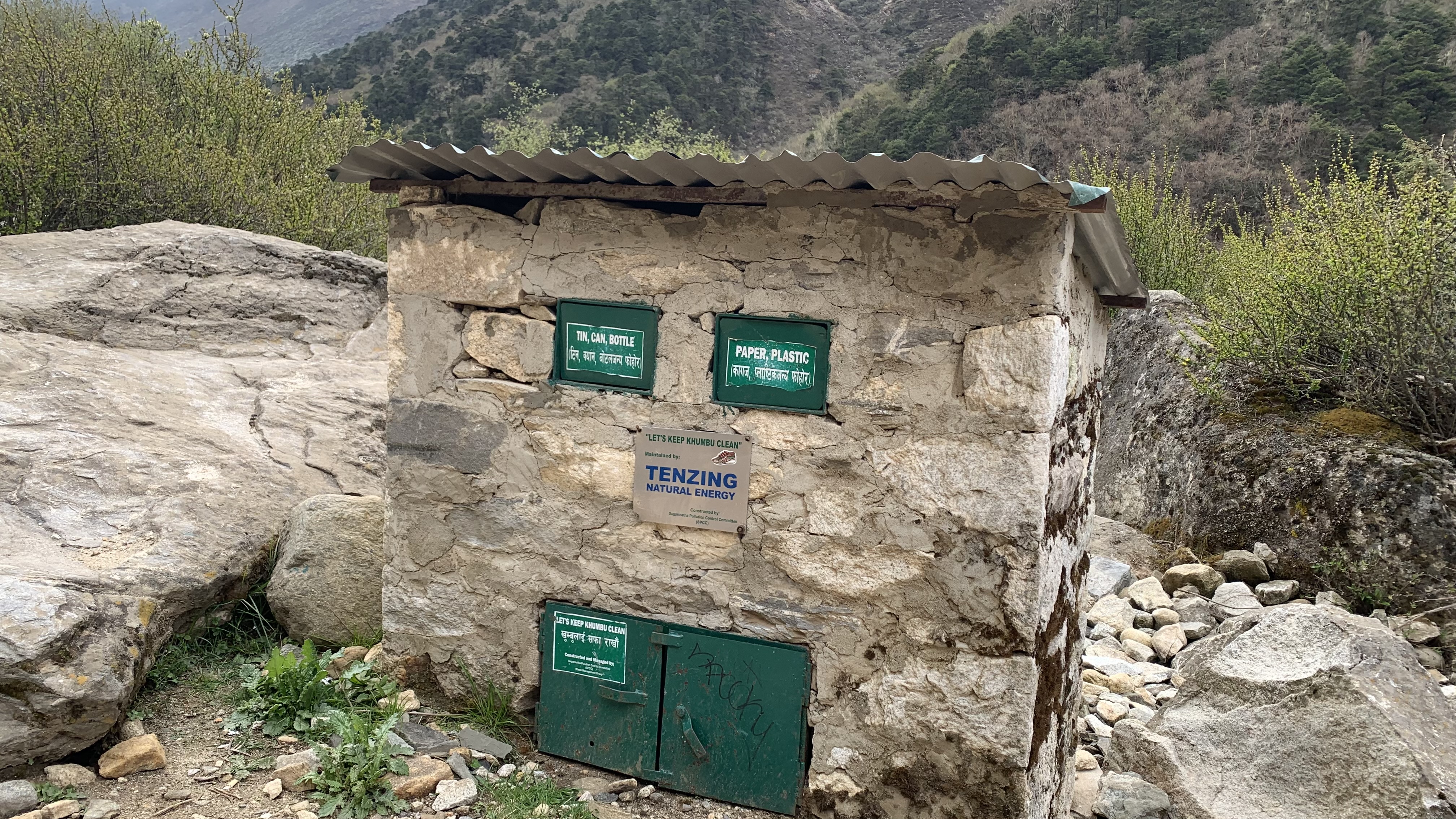
Pack it out
Even without disposable water bottles, your trek is likely to generate some waste, from wet wipes to electrolyte mix wrappers. A program between Sagarmatha Next and Sagarmatha Pollution Control Committee has established regular trash cans and recycling bins along the way that have helped to clean up the trail, but that’s not the whole story.
According to data from Sagarmatha Next, in 2019, the Khumbu Valley saw more 60,000 tourists in addition to the guides and other workers. That generated about 790kg of waste per day during the trekking season, and historically, that’s trash that has been buried and burned in the Khumbu region, only consolidating the environmental harm.
When you’re entering any wild space, you can minimize your impact by planning ahead and reducing the amount of single-use anything that comes with you. That might mean thinking seriously about bringing loads of snacks (we ran into an American couple that had brought a couple of resealable bags of homemade beef jerky instead of tons of granola bars) and you should bring a small trash bag with you to pack out your own waste (old dry bags work well for this).
To take things a step further, you can join the Carry Me Back program where you pick up a 1kg bag of waste when you’re leaving Sagarmatha National Park, tie it to your backpack, and transport it back to Lukla. From there, Tara Airlines will fly it back to Kathmandu, where the social enterprise Blue Waste to Value collects it for recycling at their facility.
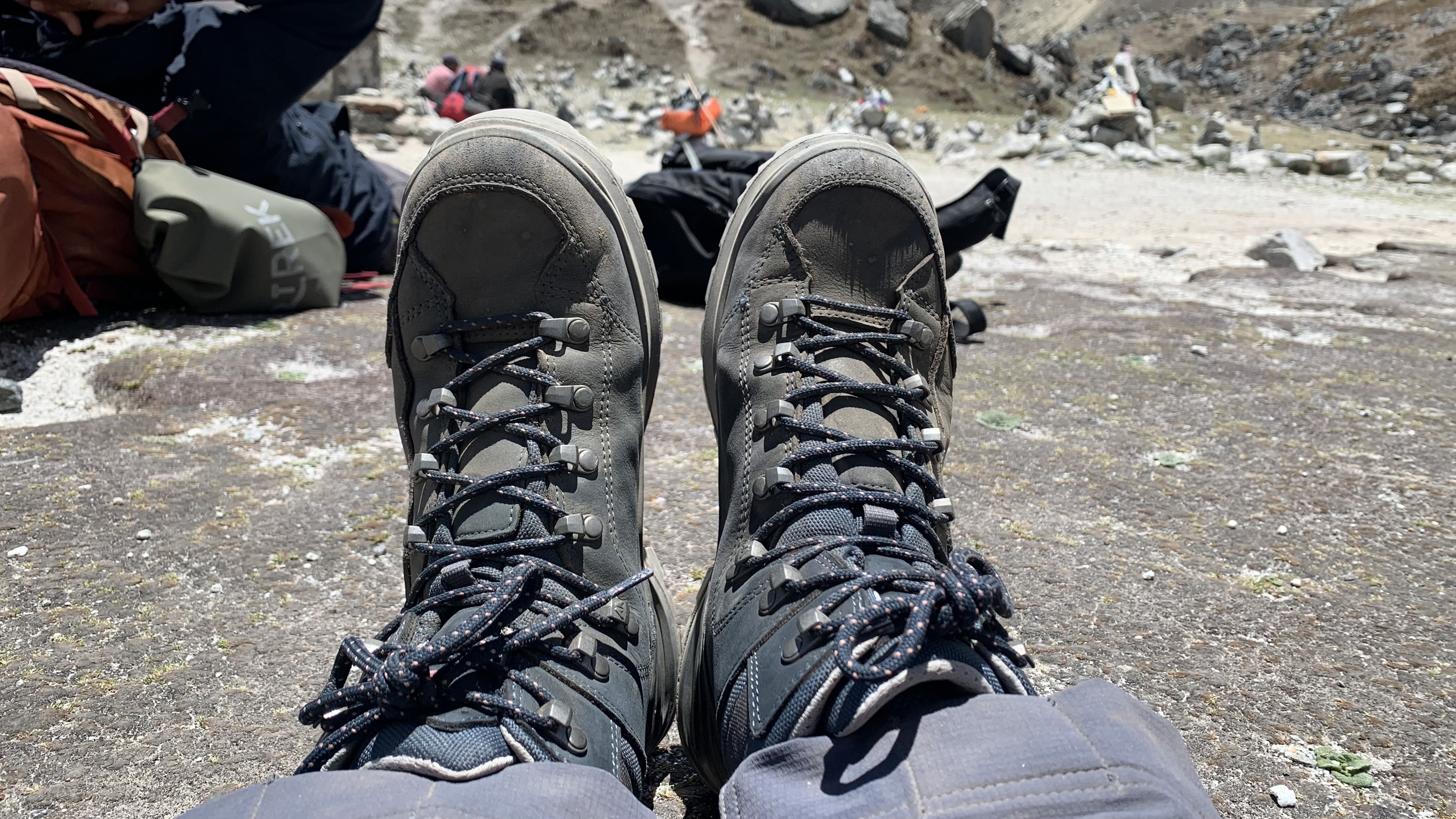
Skip the chopper ride
Despite its large visitor numbers, the Khumbu region is remote. Helicopters do a lot of the heavy lifting in terms of getting supplies in and out of the region, and even if choppers have reduced emissions over the years, it’s still not a carbon-free process.
I was surprised to learn that many trekkers use helicopters to make their trek easier, bypassing the madness of Lukla airport, or cutting down on the amount of time spent away from home. For as little as $800, you might be able to fly from Gorak Shep, just a few kilometers from Base Camp, or from Namche, all the way back to Kathmandu and skip up to 40 miles of walking. But that comes at a cost to the environment.
The most sustainable approach is to leave the choppers for transporting goods and emergencies and do what you came here to do: trek. Invest in a good pair of hiking boots (I loved my Lowa Renegade Evo GTXs), break them in before you go, build in plenty of time for delays, and you’ll feel really good about yourself at the end of your adventure when you've done the trek both ways instead of one.
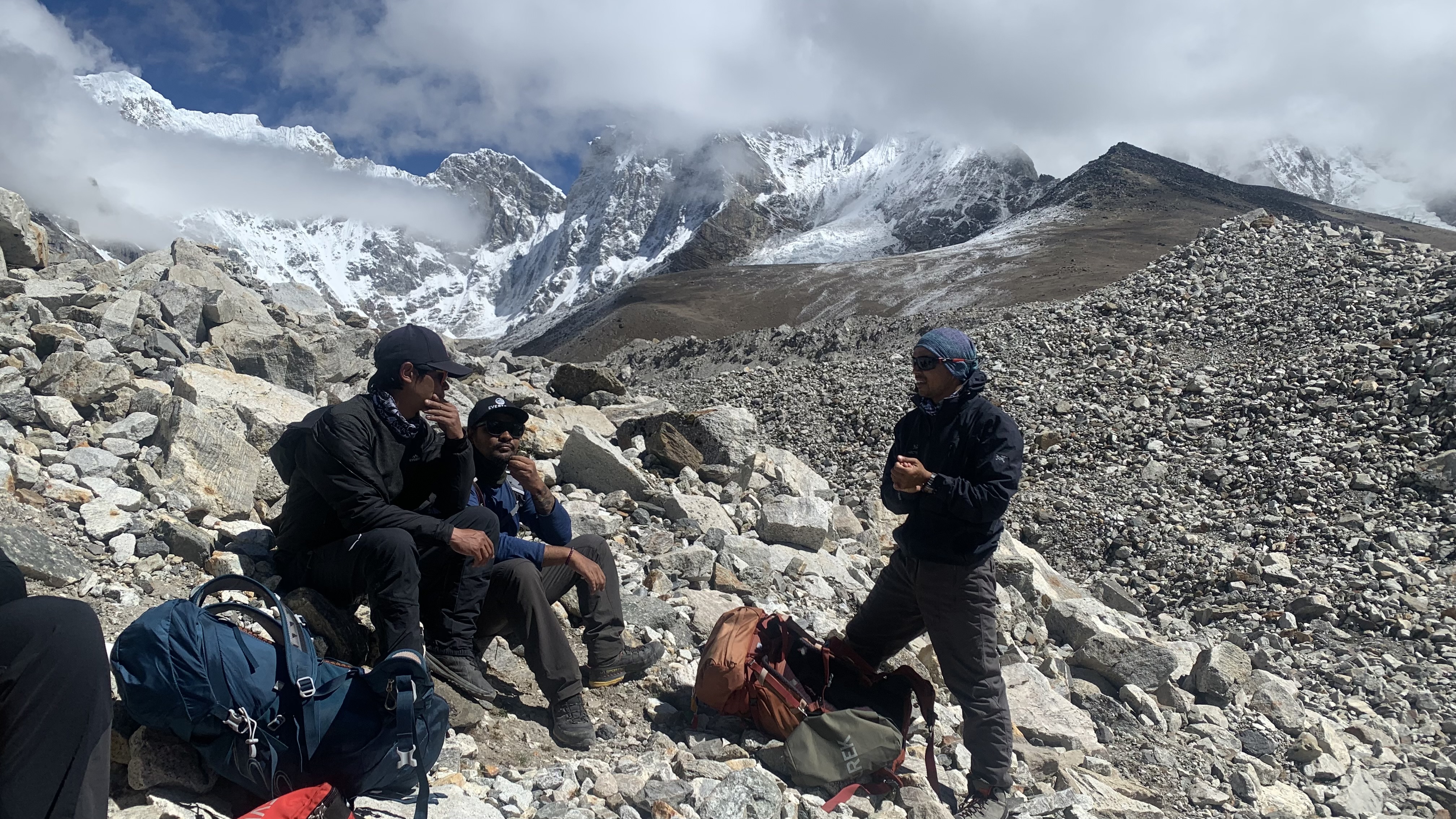
Support local
Meeting the local people is truly one of the best parts of trekking to Base Camp, and you should do everything you can to give back to them. Start by hiring a local guide (the Nepali government has introduced new legislation that requires trekkers to go with a guide) and you'll get the best knowledge about the area and support the economy of the place you’re visiting.
There are environmental reasons for hiring local guides, too, since they won’t have to travel as far to begin the trek. Our group had two guides and three porters, and all were Nepali. At the end of our trek, only one flew with us back to Kathmandu while the rest returned to their villages on foot or by bus.
While we’re on the subject of guides, remember that when you go with the cheapest option, it’s often the workers who suffer. Choose a reputable trekking company and inquire as to their practices and policies surrounding worker conditions and whether guides and porters are paid a fair wage. If you’re negotiating directly with a guide, don’t be tempted to try to undercut them to save a little money – they are humans with families doing a hard job that they deserve to be paid well for.
Also choose local food when you stop for meals at teahouses – and by that, I largely mean Dal Bhat, but also anything with potatoes. This is another way to cut down on your footprint, since it’s cooked with ingredients grown in the region, whereas that pizza or Snickers bar has to be flown in.
And bring a little cash for gifts along the trek. Yes, there are lots of shops back in Kathmandu, but a hand-knitted yak made by a local woman who has set up a trestle table along the trail has a personal touch, and your purchase could really help a local family.
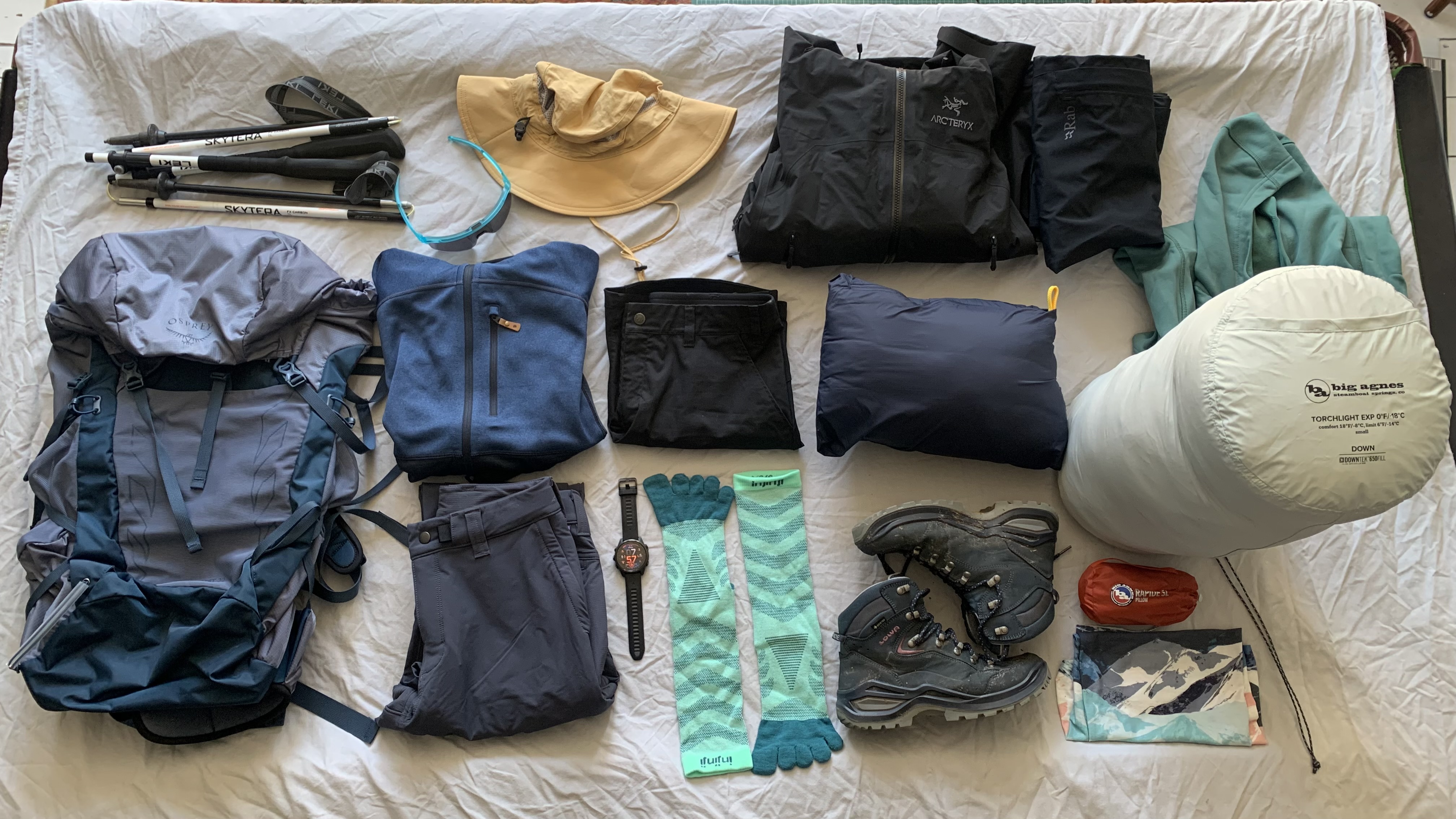
Get right with gear
There’s no two ways around it: trekking to Everest Base Camp requires a lot of gear. I set off from Lukla in a T-shirt and by the time I reached Base Camp I was glad to be bundled up in my Fjallraven Expedition Pack Down Anorak. Believe it or not, all the kit you buy is likely to count for most of the carbon emissions of your entire trek.
According to a 2018 report published in Sport Management Review, outdoor enthusiasts have a 40 percent bigger carbon footprint than athletes from other individual sports, and participants in nature sports had the highest emission levels of all. This is down in part to all the gear we buy and how much of a beating it takes when we’re out battling the elements, but there are ways to cut down on your footprint here.
You definitely don’t want to skimp on gear – that down sleeping bag or waterproof jacket could save your life – but it is important to think carefully about everything on your list. Do you need to buy everything new, or can you shop second-hand? If it’s something you’re certain you’ll never use again, like gaiters or crampons, can you rent or borrow it?
If you get to the end of your trek and have gear you know you won’t use again, you may be able to donate it – our EverTrek guides collected anything we didn’t want to be distributed between them and the porters, which means they’re better protected for their next job. You can also donate to Keep Nepal’s Porters Welfare Program. No matter what you do with your gear, take good care of it to improve its lifespan and keep it out of the landfill.
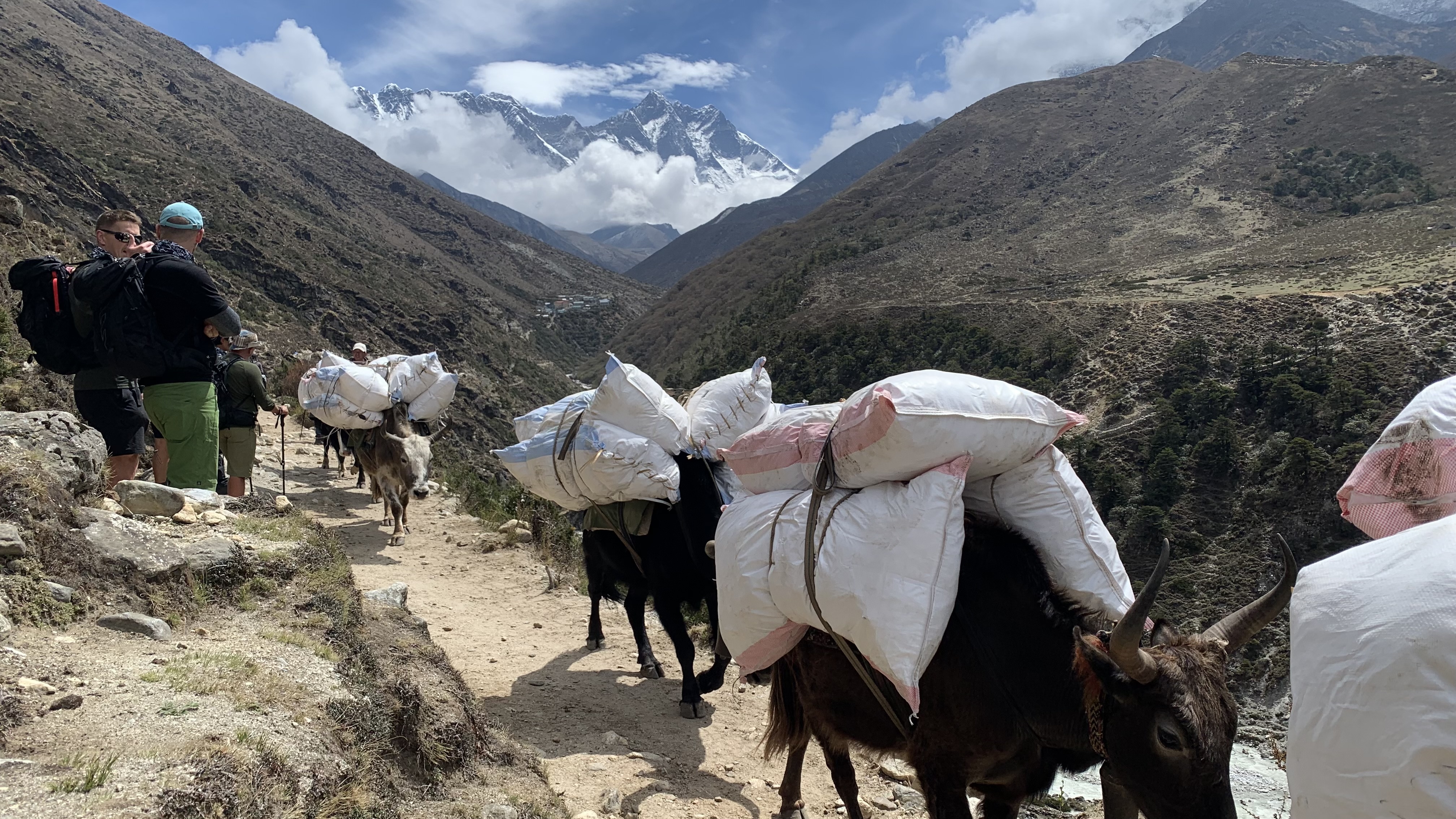
Don’t follow the herd
Stepping off the side of the trail to let herds of donkeys and yaks pass is part and parcel of the trekking experience on the way to Base Camp. These animals are used to transport goods, materials, and waste up and down the valley. It’s a more sustainable option than a helicopter in terms of emissions, and these animals don’t have the devastating impact on the environment as livestock from large-scale agriculture, but it’s still a good idea to reduce your dependency on them.
They’re often not well-treated and it’s common to see them walking on broken hooves and being beaten by their owners. Animal welfare and sustainability go hand-in-hand, so when you’re choosing a trekking company or guide, inquire as to whether they use animals or porters to carry your gear. It’s a hard job for humans, but they can consent to the position and do get paid for it, while animals do not.
Thinking about trekking to Everest Base Camp?
Learn more in our articles on trekking to Base Camp with tips on making the experience more comfortable, plus what to expect on the trail and how to train for 11 days of hiking at high altitude.
Julia Clarke is a staff writer for Advnture.com and the author of the book Restorative Yoga for Beginners. She loves to explore mountains on foot, bike, skis and belay and then recover on the the yoga mat. Julia graduated with a degree in journalism in 2004 and spent eight years working as a radio presenter in Kansas City, Vermont, Boston and New York City before discovering the joys of the Rocky Mountains. She then detoured west to Colorado and enjoyed 11 years teaching yoga in Vail before returning to her hometown of Glasgow, Scotland in 2020 to focus on family and writing.

